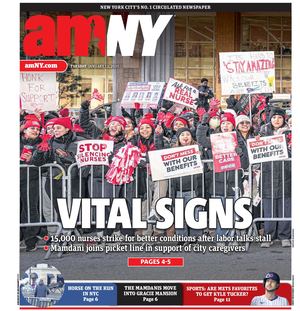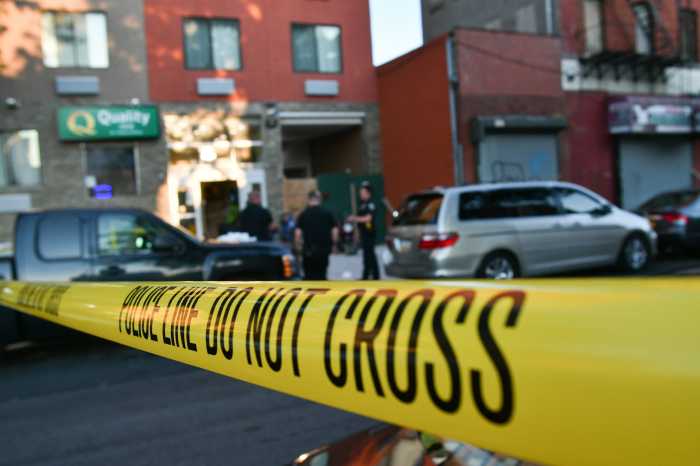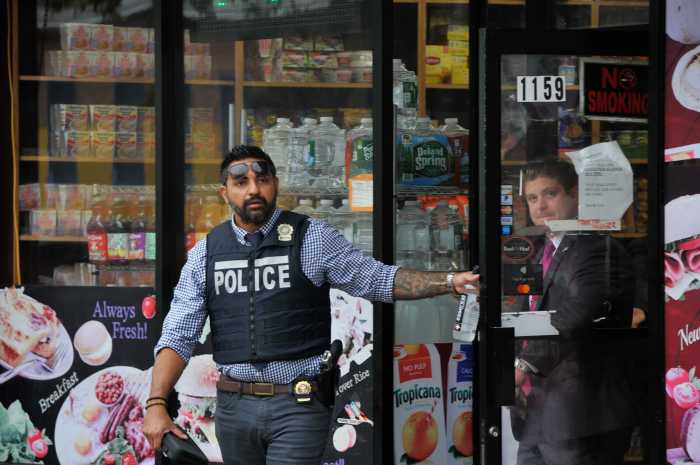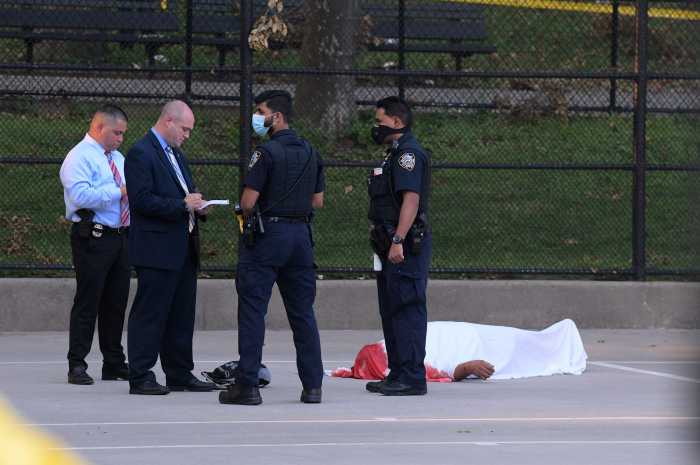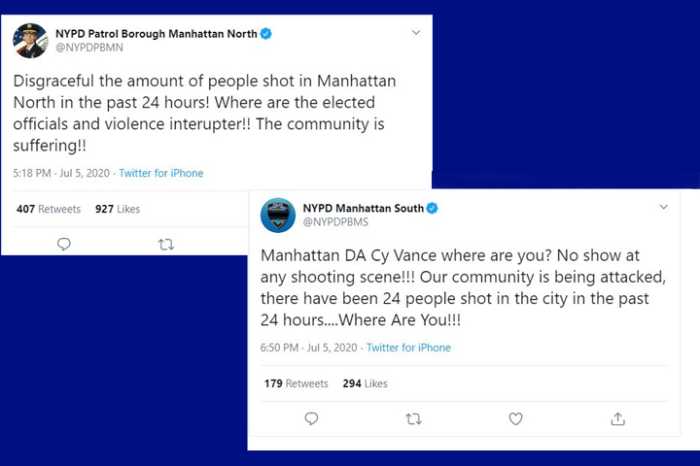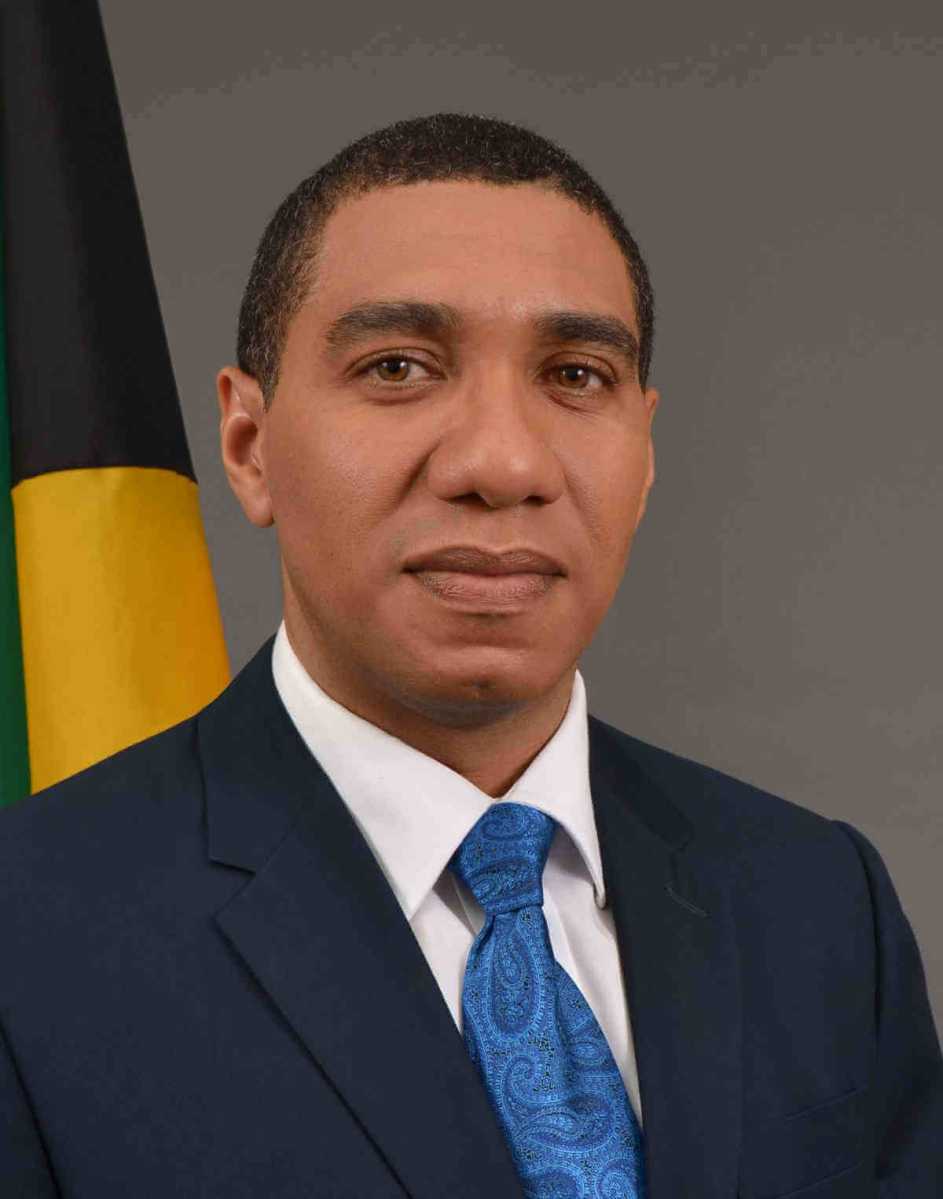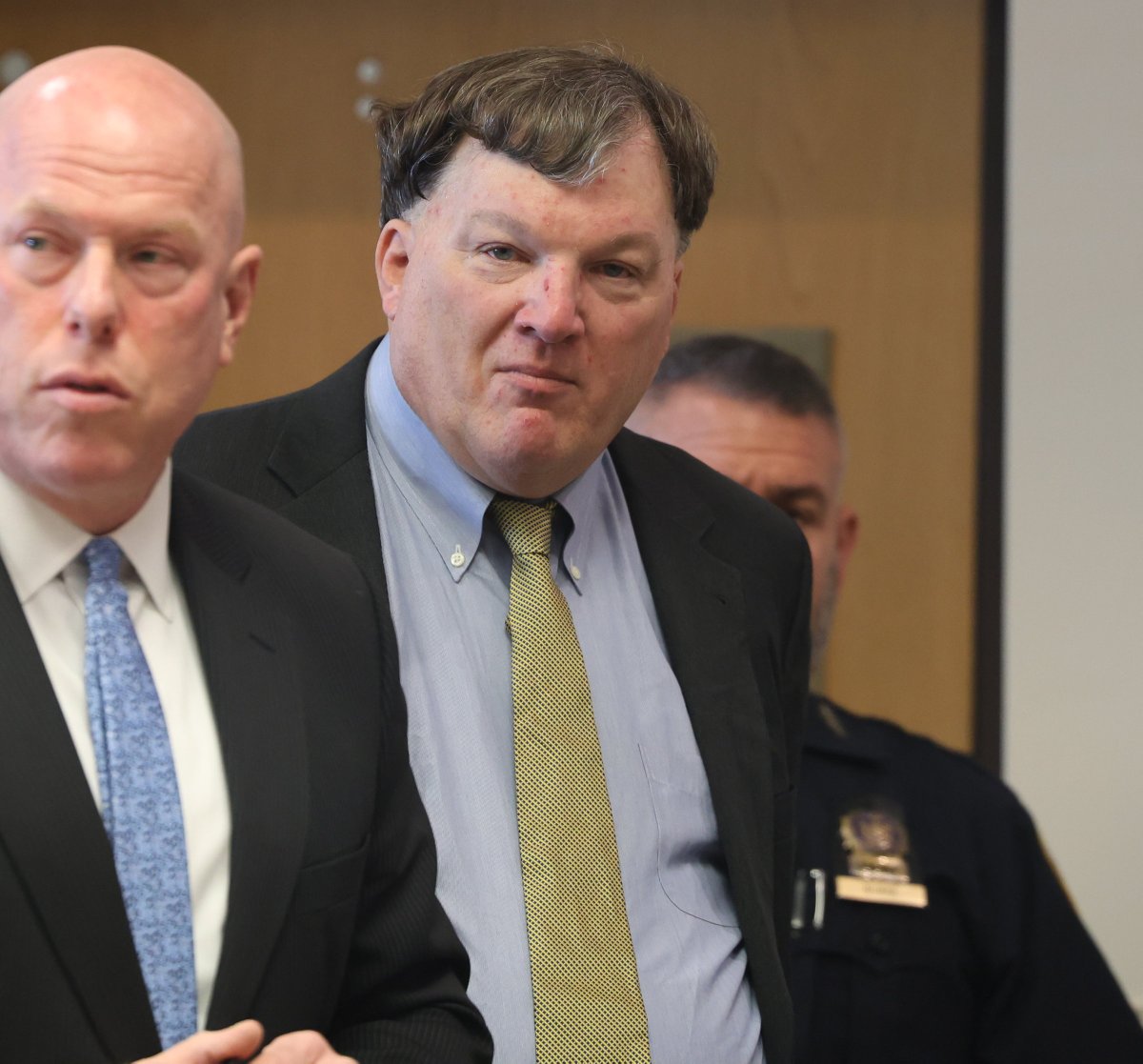This article was originally published on by THE CITY
Last August, Police Commissioner Dermot Shea called out the once-pervasive NYPD practice of “stop and frisk,” vowing he would not return to days when thousands of New Yorkers — most Black or Hispanic — were targeted by cops with little or no justification.
“It’s not about stop, question and frisk,” he said. “I think that would be a mistake going back to… that’s talking about an era where there was over-policing.”
He should know.
During his rise to the head of the nation’s largest police force, Shea was twice involved in stops that included tactics since labeled unconstitutional. Overall, he was hit five times with misconduct allegations by civilians — one of them substantiated by the city Civilian Complaint Review Board.
And Shea is far from the only high-ranking cop who drew complaints before reaching the department’s upper echelon.
Records obtained by THE CITY show Shea’s predecessor as commissioner, James O’Neill, accumulated four complaints during his long career — including one substantiated allegation by a man who charged cops roughed him up and threatened to “rip off” his testicles.
Four of the NYPD’s current 17 top chiefs have logged at least one substantiated civilian misconduct complaint. In addition, the outgoing chief of department, Terence Monahan, was cited by the CCRB for supervising the wrongful arrests of peaceful protesters during the 2004 Republican National Convention.
He’s set to become a top pandemic recovery advisor to Mayor Bill de Blasio.
Five more of the highest-ranking members of the department have been the subject of misconduct complaints that the CCRB could neither prove nor disprove or decided were justified under the patrol guidebook that regulates police conduct.
Another eight top brass — including First Deputy Commissioner Benjamin Tucker — have gone their entire careers without a single civilian complaint lodged against them.
Complaint reports obtained by THE CITY under the Freedom of Information Law after a court decision upheld a law mandating the release of long-secret police disciplinary records shed a light on the histories of some NYPD leaders whose careers spanned the height of the stop-and-frisk era.
In an emailed statement released Monday in response to THE CITY’s questions, Deputy Commissioner John Miller wrote that it was unfair to focus on civilian complaints when all of the high-ranking officers with substantiated complaints have also accumulated records of heroism and hard work protecting New Yorkers.
“It is not uncommon for highly active officers to receive complaints, especially when they are active in crime fighting,” he said. “Commissioner Shea and these other executives tend to lead from the front. In most cases, these complaints were determined to be unproven or unfounded. The ranking officers cited have over 100 years of service combined, are highly decorated, have been involved in thousands of arrests, and have reduced crime in New York City.”
“To focus on allegations, most of them unproven, and more than a decade old is a disservice when not placed in proper context,” Miller added.
A ‘Zipping’ Past
Shea’s history of misconduct is fairly modest: five complaints in a 30-year career. According to the records CCRB made available to THE CITY, he had no complaints prior to 2003, during his first 12 years on the force.
But two of the incidents included allegations of unjustified stops or unwarranted searches, according to complaint reports. And all occurred during a time when the NYPD was increasingly relying on stop-and-frisk, which would ultimately lead to federal court intervention.
One such interaction took place just after 11 p.m. on a rainy August night in 2003 when then-Captain Shea and several of his team patrolling the 41st Precinct in The Bronx pulled over a vehicle with several occupants.
The driver told the CCRB the cops who approached the car covered their badges to obscure their identities, accused him of “driving at excessive speeds” and asked if they were “zipping,” a report on the complaint obtained by THE CITY states.
 Assemblymember Jeffrey Dinowitz Newsletter
Assemblymember Jeffrey Dinowitz NewsletterThe driver told the cops he and his friends didn’t know the term “zipping” because “they were not from the streets.” But the cops “continued to harass him” and asked all to step out of the car.
The cops then proceeded to search the passengers, the driver and the car, according to the complaint. One cop ordered the driver to lift up his shirt.
The CCRB substantiated three allegations against Shea, finding he made an illegal vehicle stop, performed an illegal search of people in the car and illegally searched the car.
None of the civilians stopped that night were arrested. No summons was issued. The CCRB recommended the department bring charges against Shea. Instead, the NYPD ordered Shea and another cop simply to undergo “instructions.”
‘Fit the Description’
A second incident, which took place in 2011, appears to be a textbook example of the type of stop-and-frisk encounter a federal judge would later rule unconstitutional.
To make a legitimate stop, a cop must have “reasonable suspicion” that an individual could have been involved in or have knowledge of a specific crime.
Pressured to make stops, cops often claimed people they chose to stop “fit the description” of a suspect. Nearly 90% of those who “fit the description” were Black or Hispanic, and nearly all were released without arrest or summons.
The stop performed by Shea — who by then had been promoted to inspector — occurred around 10 p.m. on June 12, 2011. Three uniformed officers approached a man heading into a Bronx subway station in the 44th Precinct on his way to his mother’s home. The CCRB redacted the race and age of the complainant in the report obtained by THE CITY.
The man said one of the officers, who later identified himself as Shea, told him there had been an unspecified “incident” at a nearby store and he fit the suspect’s description
When the man asked what crime was committed, Shea refused to answer. Instead, the man alleged, Shea “without any further conversation” frisked him and “jiggled” his genitals.
The man said he agreed to go to the store and was escorted by the two other officers on foot, while Shea followed in an unmarked black vehicle. The store owner confirmed the man was a frequent customer and not a suspect.
The man filed a complaint with CCRB the next day. The CCRB interviewed the other two cops, and found that the incident had occurred as described, but that the stop and frisk was justified. Shea was deemed “exonerated.”
Two years later, Manhattan Federal Judge Shira Scheindlin, responding to a New York Civil Liberties Union lawsuit, ruled that the NYPD’s indiscriminate use of stop-and-frisk had violated the rights of tens of thousands of civilians
“‘Fits Description’ is a troubling basis for a stop if the description is so general that it fits a large portion of the population in the area, such as Black males between the ages of 18 and 24,” Scheindlin wrote.
‘Nasty Words’
O’Neill, Shea’s predecessor as commissioner, snagged four complaints, including one accusation of a wrongful stop-and-frisk substantiated by CCRB.
All of O’Neill’s complaints date back in the early stages of his 36-year career, well before his appointment as commissioner by de Blasio in 2016.
The one complaint that resulted in CCRB substantiating misconduct took place in 1997, according to the complaint report. Around 8:30 a.m. on Sept. 5, then-Captain O’Neill led a team of three detectives patrolling the 23rd Precinct area in Upper Manhattan.
Details are sparse, in part because CCRB reports from the 1990s rarely provided anything more than a bare-bones narrative. The report states that the cops, who were in a car, confronted a civilian.
 Michael Appleton/Mayoral Photography Office
Michael Appleton/Mayoral Photography Office
One unidentified cop began questioning the man, who refused to answer. The complainant alleged he was “treated in a rough manner” and unlawfully searched. One of the cops “threatened to rip [the complainant’s] testicles off.”
CCRB investigated and substantiated some, but not all, of the complainants accusations, finding that O’Neill had unlawfully detained and then unlawfully searched the man, and committed some unspecified abuse of authority.
The investigators were not able to prove or disprove the allegation that O’Neill and another unnamed officer had used “nasty words.”
They also were unable to prove or disprove an allegation that O’Neill punched or kicked the man during the encounter.
The records show that CCRB recommended unspecified charges against O’Neill, but the documents do not indicate what, if any, action the NYPD took.
Ultimately, the police commissioner has final say over misconduct and can approve or disapprove of CCRB’s findings — an arrangement Shea is currently fighting to maintain, with de Blasio’s backing.
THE CITY emailed questions to Visa, where O’Neill currently serves as a top executive. As of late Monday, there was no response from O’Neill.
‘The Wrong House’
The CCRB substantiated misconduct by four other top NYPD cops.
Michael Lipetri, chief of crime control strategies since 2019, racked up the most civilian complaints of any of the top cops, tallying 16 between 2002 and 2015. In nine of those cases, CCRB determined the incidents occurred as alleged but that Lipetri’s conduct did not violate department regulations. In two incidents, CCRB substantiated allegations of misconduct.
One occurred in February 2002 when he was a sergeant in East New York, Brooklyn’s 75th Precinct. During an early morning execution of a search warrant, the tenant alleged that one of the cops yelled at her to “Get the f—k down on the floor” as they entered her apartment.
CCRB substantiated that Lipetri used the profane language, but found that the search was justified. He was exonerated of wrongful search and seizure charges.
 NYPD
NYPD
The second took place in 2015 and involved what appears to be the execution of an arrest warrant at the wrong house in Brooklyn. By then Lipetri had risen to inspector.
The tenant said five cops burst into his apartment at 5 a.m. where he and his family — including two children — were sleeping. The cops had shown up in unmarked cars with a warrant targeting a name that “did not match anyone who lived in their home.” No one was arrested and the CCRB substantiated charges against Lipetri of wrongful entry into the apartment and the use of discourteous words.
In the first case, CCRB recommended charges and the NYPD issued what’s called a command discipline, which usually involves the loss of vacation days. In the second case, CCRB recommended formalized training. The NYPD issued “instructions” to him, one of the lowest forms of punishment.
Overall, Lipetri was accused of wrongfully entering homes in 10 separate incidents, including four that took place within a seven-month period in 2007.
Under the NYPD’s current protocol, that track record would now trigger extra monitoring. The CCRB exonerated him in each of these incidents.
‘Get the F—k Out’
Thomas Galati, chief of the NYPD’s intelligence bureau, collected seven civilian complaints between 1992 and 2002. Two were substantiated.
In 1992, six years after joining the force, Galati was accused of making a wrongful arrest in the 102nd Precinct in central Queens when was a sergeant. A civilian reported six cops stopped and questioned him. The man said cops “grabbed and choked” him and then arrested him for resisting arrest.
The CCRB complaint report states the oversight board substantiated charges of wrongful arrest against Galati and an unnamed officer, but did not substantiate any of the wrongful use of force allegations.

The second incident occurred two years later in Brownsville, Brooklyn’s 73rd Precinct when Galati was assigned to a street crime unit that patrolled the neighborhoods in an unmarked vehicle.
The civilian alleged that around 1 a.m. three cops pulled up next to him as he walked down the street. He alleged that they frisked him and threw him up against a gate, and says one of the cops punched him in the face.
They didn’t arrest him and as he was walking away he says one cop yelled out, “Get the f—k out of here.”
The victim took down the license plate of the cops’ vehicle, and the NYPD tied Galati and the other cops to encounter. CCRB substantiated charges that Galati punched or kicked the man and that the search was not justified.
The CCRB recommended charges, but the NYPD imposed no punishment on Galati. He was made chief of intelligence in 2013.
‘Come With Me to Vermont’
Jeffrey Maddrey, who became chief of community affairs last June, has a CCRB history of excessive use of force dating back to the 1990s. One of his three CCRB complaints was substantiated.
In March 1995, Maddrey was a patrol officer assigned to the 110th Precinct in Corona, Queens. On a night in March, two plainclothes cops in an unmarked car pulled up next to a woman and man sitting in a car kissing. One cop shined a light into their faces and an argument ensued.

The woman said the cops demanded to see her ID, but she refused unless they showed her their badges.
She said one of the cops told her: “If I show you a badge you’re going to be arrested.” The officers then “yanked” her out of the car, “slammed” her on the vehicle’s hood, handcuffed her and took her to the precinct, the complaint states.
There, she said, she asked to see a supervisor to file a complaint against the cops who arrested her. She claimed one of the cops in the station house said, “Let her come with me to Vermont next weekend and we’ll take care of the ticket.”
Maddrey was identified by his badge number and CCRB substantiated three charges against him and another officer: excessive use of force, threat of arrest and cursing. It appears the woman was released without charges, but CCRB made no recommendation for punishment.
Unlawful Entry
Rodney Harrison, the NYPD’s chief of detectives, racked up six civilian complaints during his 29 years on the force, including three incidents in which he was accused of using excessive force.
In August 2003, when Harrison was a sergeant in the 83rd Precinct in Bushwick, Brooklyn, a complainant alleged that a group of cops busted into her apartment where she was living with her five children. She said they brandished guns and claimed they were looking for the children’s father.
They made no arrests and the CCRB ultimately substantiated her claim that he and another detective unlawfully entered the apartment. They neither proved nor disproved her claims that the cops used physical force and the threat of arrest.
The CCRB recommended charges, and NYPD imposed a command discipline, which usually involves the loss of vacation days.
Before he was made chief of detectives in 2019, Harrison was twice more accused of excessive use of force — including an early 2011 incident in which he and other detectives were responding to a 911 call of shots fired.
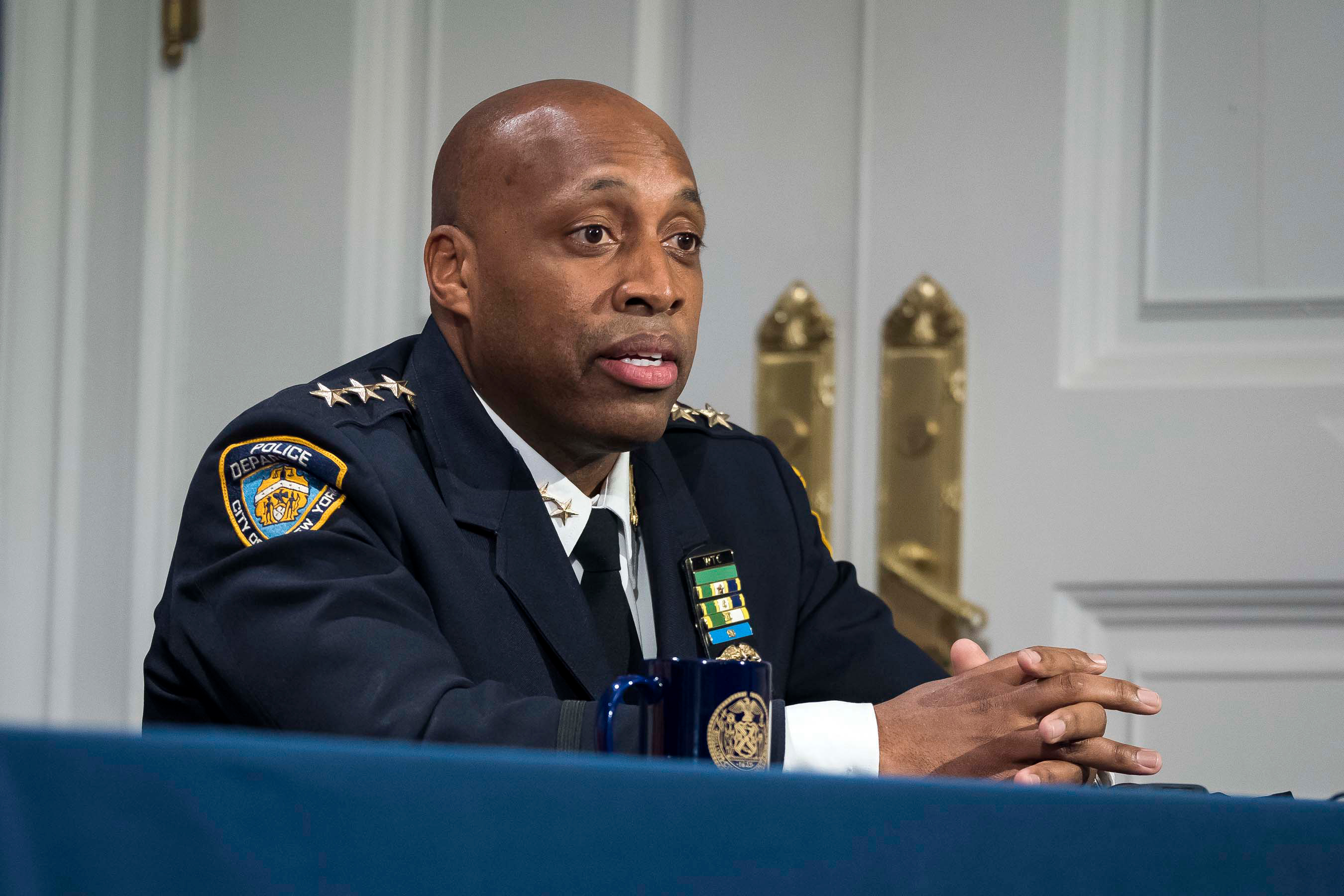 Ed Reed/Mayoral Photography Office
Ed Reed/Mayoral Photography OfficeShortly after the new year of 2011 arrived, a tenant in an Upper Manhattan apartment said a group of cops pushed their way into her apartment looking for her son. They said they’d received a report he had fired a gun, but the tenant said her son wasn’t home.
The complaint report identifies then-Detective Harrison and the tenant says he threatened her with arrest if she didn’t let him into her son’s room, which was locked. He did not have a warrant but said he could get one “in half an hour.” She ultimately let him into the room but he wasn’t there.
The officers hurried out when they received a call claiming the son had been seen down the street and they returned soon after with him. This time, the tenant says, Harrison had her write a letter giving permission to search her son’s room.
The charges of unjustified entry of the apartment and threat of arrest were deemed unsubstantiated.
In response to THE CITY’s questions about the four cops, Miller wrote: “Chief Harrison received the Combat Cross, and Chief Galati received the Medal of Valor, two of the highest awards for heroism in the NYPD. Chief Lipetri has been integral to the strategies to reduce crime as well as stops, summonses and arrests as part of the Neighborhood policing philosophy. Chief Maddrey has made unprecedented inroads in redefining community relations. Between them, Lipteri and Maddrey have hundreds of medals.”
Help Us Hold the NYPD Accountable
Tell us about your experience with the NYPD. Did you have an interaction with a certain officer that bothered you? Do certain cops have a reputation in your neighborhood? Have you ever filed a complaint? Have you ever been harassed and wanted to file a complaint but didn’t? Are you a police officer who’s tried to call out misconduct? We want to hear from you.
Powered by CityBase.
THE CITY is an independent, nonprofit news outlet dedicated to hard-hitting reporting that serves the people of New York.
